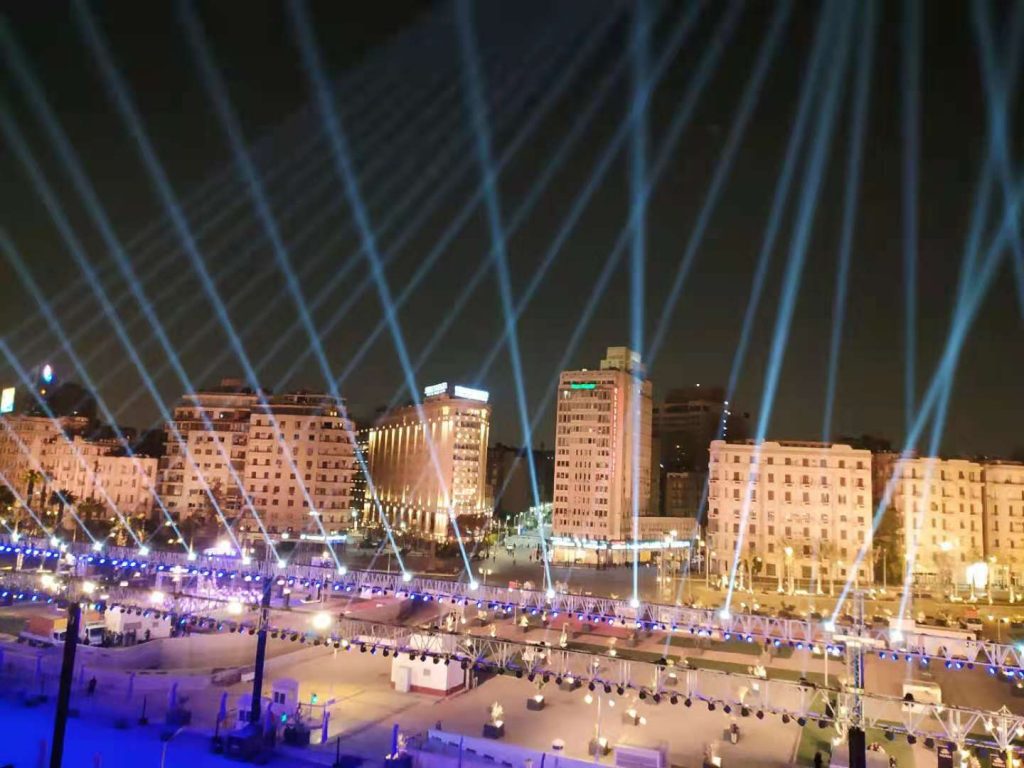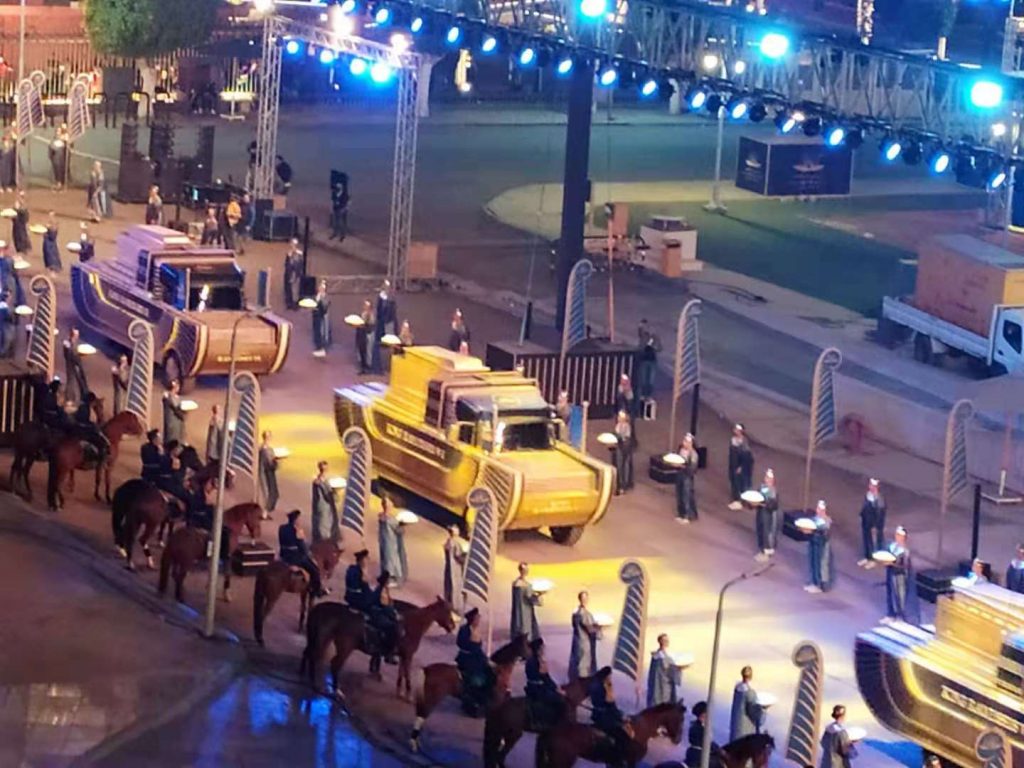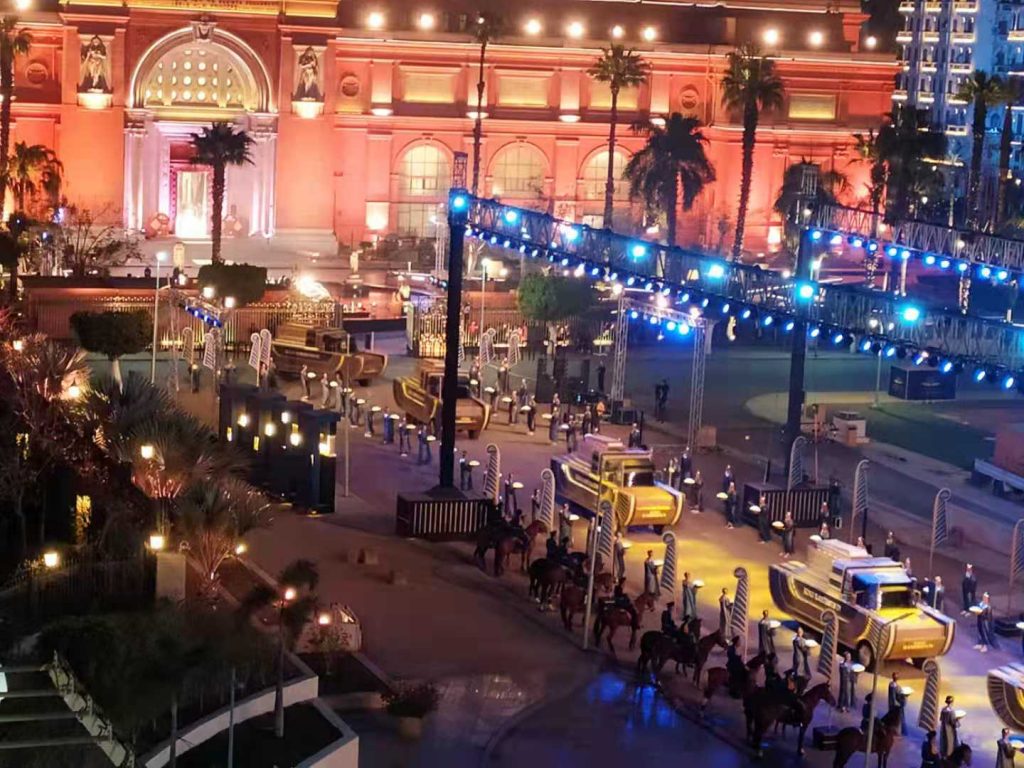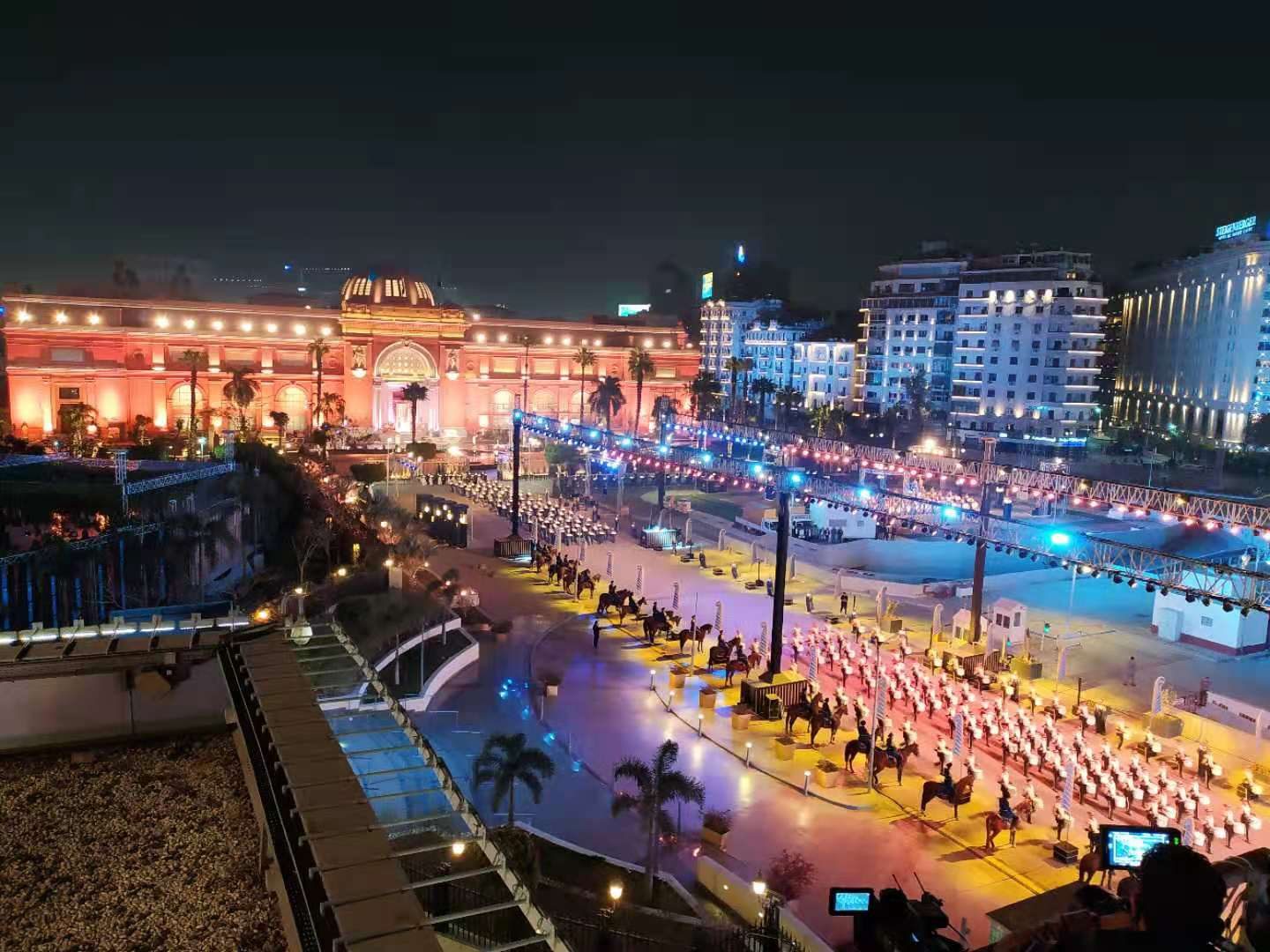Cairo, April 3 On the evening of April 3rd local time, the Egyptian government held a grand relocation ceremony for 22 famous kings, queens and queens mummies, which are currently preserved in the Egyptian Museum of Tahrir Square in central Cairo.
Relocated to the National Museum of Egyptian Civilization, located south of Cairo. The grand relocation was named “Pharaoh’s Golden Parade” and attracted widespread attention and coverage from the media in Egypt and around the world.
At about 8 p.m., the relocation activity officially began amid 21 salutes and solemn military music. The renovated Tahrir Square is surrounded by bright lights, and the Egyptian museum in the night is as bright as day. In front of the museum near the Nile side, a long passageway was specially opened for the golden floats of kings, queens and queens. On both sides of the passageway, there are people dressed in ancient Egyptian costumes and dressed as Egyptians in the Pharaohs to welcome them, and guards riding horses were waiting.
The 22 mummys came from the 17th to 20th dynasties of the new kingdom of Egypt. Their names include the most famous King Ramsis II and the famous Queen Hashepsut in Egyptian history.
Each mummy rides a golden float decorated in the ancient Egyptian style alone. Each golden float is decorated with the name of the dynasty and the name of the owner is written. The motorcade drove slowly in the order of the owner’s age.
After walking out of the passageway, he first took a circle around Tahrir Square, then drove through many riotous areas in Cairo, and finally reached the Egyptian National Civilization Museum in South Forstatt, Cairo.

It is only about 7 kilometers from the Egyptian Museum in Tahrir Square to the Egyptian National Civilization Museum in the south of the city. However, the golden float drove slowly for 40 minutes to avoid being too fast and disturbing the historically prominent and noble pharaoh souls.
At the same time, each golden float is equipped with shock absorbers to ensure that these precious relics will not be bumped by bumps on the road surface for 40 minutes. The reporter noticed that a large number of Egyptian police and soldiers were strictly guarded from the Egyptian museum at the starting point of the motorcade and passing through the road to prevent unexpected incidents such as terrorist attacks.
Upon arrival at the new home, the mummy will be carefully placed in better conditions and more advanced coffins, in which the temperature and humidity are better controlled than in the Egyptian museum in Tahrir Square. It is reported that before moving, these mummies had been stored in the Egyptian Museum in Tahrir Square for about 100 years.

The National Museum of Egyptian Civilization officially opened to the public on the day after the arrival of 22 mummies, after the museum was partially opened in 2017.

Egyptian media said that this cultural feast along the Nile River, known as the “Golden Parade of Pharaohs”, aims to commemorate Egypt’s rich historical and cultural heritage and attract tourists back to Egypt after the global tourism industry has stalled due to the coronavirus epidemic.
Zahi Havas, an archaeologist at Egypt’s former minister of artifacts, said: “This parade made all Egyptians proud of their country. In the time of the coronavirus epidemic, they want to be happy and proud of their ancestors.”



